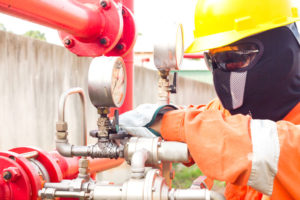Calibration
Calibration – Gas Monitor Repair
Many customers would rather not have the liability of calibrating their own meters. Therefore, they rely on us to provide third-party calibration. Let Green Light Safety take the burden of performing calibration and documentation off your hands. Place it into the hands of an insured professional. Call Green Light Safety! We give Calibration a Green Light!
 Green Light Safety has a complete offering on Calibration Services including Calibration Certificates for Confined Space Meters, Flame Ionization Detectors (FID), Photo Ionization Detectors (PID), Electrochemical (EC) Sensors, Catalytic Bead LEL Sensors, Oxygen Analyzers PPM, Inert Monitoring Devices, and many other types of Gas Detection Equipment.
Green Light Safety has a complete offering on Calibration Services including Calibration Certificates for Confined Space Meters, Flame Ionization Detectors (FID), Photo Ionization Detectors (PID), Electrochemical (EC) Sensors, Catalytic Bead LEL Sensors, Oxygen Analyzers PPM, Inert Monitoring Devices, and many other types of Gas Detection Equipment.
Typical Calibrations start at $65 for Single Gas, $85 for O2,LEL,CO,H2S 4-gas Monitors, and customized pricing for Fixed Systems Calibrations and Commissioning. We also offer a Rush Expediting Service!
While calibrating, we test for many things beside calibration such as Oxygen Sensor Life, Pump Operation (if applicable), Monitor Integrity (Water Ingress) Monitor Completeness (no missing screws, belt clip, etc), Battery Life, Filter Integrity, as well as Meter Functionality (Testing of Alarms, Switches, Lights, etc). This comprehensive test allows us to provide Preventative Maintenance on your Meter and could save over $1000 due to downtime andor meter replacement.
If you have questions about calibrating, Contact Us or see our FAQs for more information.
Customers ask: How often should I calibrate my meter?
Answer: That depends on the manufacturer…some say 30 days whereas others say 90 or 180 days. Typically the facility HSE will have a plan that includes calibration frequency. Otherwise, revert to manufacturer recommendations.
Customers ask: What is a bump-test and how often should I bump-test my meter?
Answer: Every manufacturer recommends a bump-test before each days use, meaning if you are planning on using your meter, it must be bump tested before using it that day. A bump test is nothing more than applying a concentration of known gas in “normal running” mode to verify sensor response and alarms.
Note: Do NOT apply a high concentration of gas (CO- Engine Exhaust or Flammable Gas) as this will overdose the sensor and could lead to early sensor replacement.
